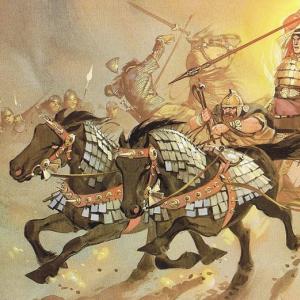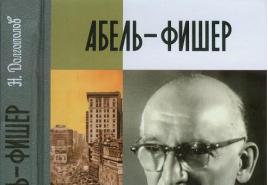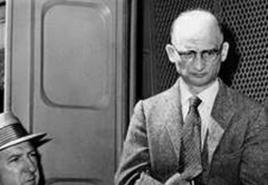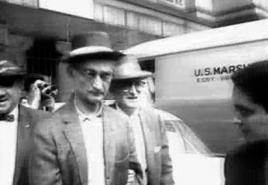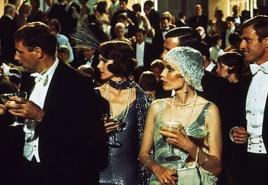Establishment of the Soviet power in the gavrilov pit. Gavrilov-Yam
However, you cannot call it a famous place. The former Yamskaya settlement of the times of Ivan the Terrible now exists as a depressed regional center, lost among the deserted villages, fields and meadows along the banks of the Kotorosl plain winding along the plain. Time turned Gavrilov-Yam into an ordinary village, then into a working village at the factory, as a result, over the four centuries of its existence, no bright sights have accumulated here.
Travelers are usually interested in the village of Velikoe, which is 4 km from Gavrilov-Yam, and its Velikoselsky Kremlin. And the town goes like a makeweight, all the same along the way. For a transit visitor, Gavrilov-Yam seems to be quite a typical cluster of Soviet five-story buildings and inevitably cute, as in the entire Yaroslavl region, village houses with carved platbands. Connoisseurs will see more: firstly, several monuments of provincial wooden Art Nouveau, and secondly, a complex of buildings from the early 20th century associated with the spinning and weaving manufactory of the merchant Lokalov. Factory buildings, dormitories, an almshouse for workers (which became the city House of Culture), an administrative building (now the House of Children's Art), the People's House and the oldest city stadium in the region, built by the local sports club "Chaika" with the support of the owners of the manufactory in 1912. All this is a true part of the history of the city, to which are attached colorful stories of old-timers - for example, that before the revolution, even a few Englishmen played football in the Chaika club.
Once a backbone enterprise, the Lokalovskaya Spinning and Weaving Manufactory was equipped with the latest technology by its owners and produced first-class linen products. Even Comrade Lunacharsky, who visited here in 1919, noted that the working class received it from the exploiting owners in an exemplary state. Today, as you might guess, the factory is idle. The last hope for Gavrilov-Yam flashed when the flax mill was acquired by Oleg Deripaska. By that time, the oligarch had already bought the famous Moscow "Trekhgorka" in order to deploy on its place the construction of elite housing a stone's throw from the White House, and promised to transfer fabric production just to Gavrilov-Yam. But Trekhgorka was closed, and the Gavrilov-Yamsk plant never started working. Therefore, the famous local flax, forever imprinted on the city coat of arms along with the arc from the coachman's troika, is no longer available here.
To cope with the overwhelming sadness will help inspecting not so significant, but completely authentic local attractions. These include a MiG-23 airplane standing on a pedestal at the entrance to the Agat machine-building plant, a fancy rusty mechanism with large toothed wheels to drain water on a pond, and a Soviet-era urban sculpture. The brutal "Swimmer" in the meadow near the Bechevka river and the "Pioneers" at the entrance to the Tekstilshchik park - as usual, both compositions are painted with cemetery silver and are devoid of hands.
And finally, the city "joker": the Museum of the coachman Gavrila. Gavrilov-Yam - coachman Gavril, everything is logical. The creation of this character, claiming to be a city brand, is the fruit of Gavrilov-Yam's progressive aspiration for the development of tourism. For these purposes, one of the merchant Lokalov's outbuildings - a glacier - was sheathed with boards, with the participation of a Finnish artist, it was stylized as a Yamskaya carriage, and inside they hung all the horse and household utensils of the pre-automotive period. It turned out simple, but quite emotional.
|
Flag of Gavrilov-Yam |
Coat of arms of Gavrilov-Yam |
| A country | Russia |
| Subject of the federation | Yaroslavl region |
| Municipal District | Gavrilov-Yamskiy |
| Urban settlement | Gavrilov-Yam |
| Population | 17 792 people (2010) |
| Postcode | 152240 |
| Timezone | UTC + 4 |
| City with | 1938 |
| OKATO code | 78 212 501 |
| First mention | 1545 |
| Area | 11 km² |
| Official site | link |
| Ethno-burial | gavrilov-yamtsy |
| Car code | 76 |
| Center height | 92 m |
| Telephone code | +7 48534 |
| Chapter | Valery Alexandrovich Popov |
| Coordinates | Coordinates: 57 ° 18'00 ″ s. sh. 39 ° 51'00 "in. d. / 57.3 ° N sh. 39.85 ° E d. (G) (O) (I) 57 ° 18'00 "s. sh. 39 ° 51'00 "in. d. / 57.3 ° N sh. 39.85 ° E d. (G) (O) (I) |
Gavrilov-Yam is a city (urban settlement) in Russia, the administrative center of the Gavrilov-Yamskiy district of the Yaroslavl region. The city is located on the Kotorosl River (a tributary of the Volga), 46 km from Yaroslavl. Freight railway station (passenger traffic to Semibratovo station was canceled in 2003). The population according to the 2010 census is 17,792 people.
Economy
At the moment, the machine-building plant (OJSC GMZ "AGAT") and the Gavrilov-Yamskiy flax mill are two city-forming enterprises that provide employment for the majority of the city's population.

In the early 2000s, the weaving production of the Moscow factory Trekhgornaya Manufactory was transferred to the city.
The Gavrilov-Yamskiy Flax Mill traces its history back to the Lokalov textile factory. It presents all stages of the technological chain of flax processing - from flax-combed production to finished products (linen and mixed fabrics, patterned tablecloths, napkins, towels, etc.). The plant is the only one in the country that produces art canvas.
OJSC GMZ "AGAT" produces modern units for engines of military aircraft, manufactures and repairs fuel-regulating equipment for aviation equipment, hydraulic equipment for mobile lifting equipment, road-building, utility vehicles and manipulators, spare parts for cars. The plant also produces consumer goods: baby strollers, luggage carts, stalls, folding tables and chairs, racks, sun loungers, folding beds. Several years ago, the assembly of motoblocks was established.
In addition to those listed, the category of large and medium-sized industrial enterprises includes:
- JSC "Paintwork materials" (production of paints and enamels)
- State Unitary Enterprise (GUP) "Gavrilov-Yamskiy bakery" (bakery and confectionery products);
- State Unitary Enterprise "Gavrilov-Yamskaya Printing House" (printing industry).
- Closed Joint Stock Company (CJSC) Gavrilov-Yamskiy "Agropromtekhsnab" (mechanical engineering and metalworking);
The city has recently been developing tourism. Since the end of 2001, Gavrilov-Yamskiy municipal district has been included in the program of tourist routes. The new tourist route "Gavrilov-Yam - the village of Velikoye" is included in the Golden Ring of Russia. On average, the region is visited by 1600 tourists per year.
History
The first written mention of the village "Vora, Gavrilovo identity", located 7 km from the Rostov-Suzdal tract, dates back to 1545. Mentioned in the lists of the Trinity-Sergius-Varnitsky Monastery, to which it belonged at that time. At that time, the village consisted of only 7 courtyards.
During the 16th-18th centuries, the village changed its name and status several times: the village of Gavrilovsky Yam (decree of 1580 on behalf of Tsar Ivan the Terrible), Gavrilov-Yamskaya Sloboda, the village of Gavrilov-Yam (after the construction of the church at the end of the 18th century).

In the early 1870s, a local merchant Aleksey Vasilyevich Lokalov from the village of Velikoye opened a textile manufactory in the village, which ensured the rapid growth of a small village at that time.
A recent walk around Tutaev gave me not only wonderful impressions of acquaintance with the family festival "City - Fair", but also ...
Festival "City-Fair" in Tutaev: fun, professional, in Russian!
Modern Russian tourists are very sophisticated people. It seems that we have already seen everything: all kinds of interactions, and events with colossal ...
Tutaev invites you to the winter festival of family outdoor activities and crafts "City Fair"
The theme of the development of small historical cities, the revival of folk traditions and the possibility of "breaking away" from megacities often flickers today as ...
VYATSKOE, Yaroslavl region
Do you want to enjoy the atmosphere of an old, prosperous and very colorful village? Then you should definitely visit the pearl of the Yaroslavl region ...
 Rybinsk authorities plan to restore the estate of Nikita Mikhalkov's ancestors
Rybinsk authorities plan to restore the estate of Nikita Mikhalkov's ancestors
In the Yaroslavl press there were reports that the authorities of the city of Rybinsk started talking seriously about the restoration of the Petrovskoye estate, which ...
 A teacher from Zaozerye independently saves a monument of wooden architecture of 1860
A teacher from Zaozerye independently saves a monument of wooden architecture of 1860
In the Uglich district of the Yaroslavl region there is an old village with the beautiful name of Zaozerye. On its few streets, many have survived ...
 About Happy Birthday
About Happy Birthday
Friends, I sincerely thank each of you for your congratulations, kind words, sincere lines and such wonderful wishes! Every day I thank ...
Good news came to us from the ancient town of Myshkin, in the Yaroslavl region. The restoration of the merchant's city estate will soon begin there ...
The city is located on the Kotorosl River (a tributary of the Volga), 46 km away. Freight railway station (passenger traffic to the station was canceled in 2003). Population - 17 351 people. (2017).
By order of the Government of the Russian Federation of July 29, 2014 No. 1398-r "On approval of the list of single-industry towns" included in the category "Single-industry municipalities of the Russian Federation (single-industry towns) with the most difficult socio-economic situation".
History
The first written mention of the village "Thief, Gavrilovo identity", located 7 km from the Rostov-Suzdal tract, dates back to 1545. Mentioned in the lists of the Trinity-Sergius-Varnitsky Monastery, to which it belonged at that time. At that time, the village consisted of only 7 courtyards.
During the XVI-XVIII centuries, the village changed its name and status several times: the village Gavrilovsky Yam (decree of 1580 on behalf of Tsar Ivan the Terrible), Gavrilov-Yamskaya Sloboda, village (after the construction of the church at the end of the 18th century).
Nikolskaya Church
In the early 1870s, a local merchant Aleksey Vasilyevich Lokalov from the village of Velikoye opened a textile manufactory in the village, which ensured the rapid growth of a small village at that time.
On August 5, 1922, the presidium of the Yaroslavl Provincial Executive Committee granted Gavrilov-Yam the status of an urban-type settlement. A decade and a half later, on December 26, 1938, by the Decree of the Presidium of the Supreme Soviet of the RSFSR, the working village of Gavrilov-Yam was transformed into the city of Gavrilov-Yam.
In 1968, a machine-building plant was opened in the city - an object of defense significance, formed on the basis of a subsidiary of the Moscow Mechanical Plant "Znamya Revolyutsii".
origin of name
Coachman Museum
It is believed that the village got its name from the coachman Gavrila. In any case, the first part of the city's name is undoubtedly associated with a male name. Gavrila.
origin of name Yam has several versions. One by one, almost official, was once here yam - the station on the post road, where the accelerating pit horses were kept. According to another version, the name is associated with the fact that the settlement is located in relation to the surrounding territory in a lower place. The third variant of the origin claims that “in the languages \u200b\u200bof the peoples who inhabited this corner of Russia, the word Pit had several meanings, including - beauty, landscape, picturesque place ”; such a meaning of the word really exists in the Tatar and Mari languages.
Coachman Museum
The museum was opened on August 20, 2005. In the collection of the museum: arches, bells, sleighs, harness, household utensils, etc.
Thematic holidays
On June 12 in Gavrilov-Yam a coach song festival is held. The festival became the winner of the Russian Event Awards national prize (2014). The national prize "Russian Event Awards" was established as an industry award, awarded following the results of a project competition for achievements in the development of the event tourism industry.
In August, the Regional Festival of folk arts and crafts "Souvenir of the Country of the Coachman" is held. At the festival, you can not only see, but also purchase folk art, learn many types of crafts on your own: woodcarving, basket weaving, blacksmith's craft, ceramics, hand weaving, wool felting, dough plastic, the art of making products from a burl, a patchwork doll and much to another. Within the framework of the festival "Souvenir of the Country of the Coachman", a competition is held for the best master class in folk arts and crafts with monetary rewards for the participants. The main hero of the festival is the fairytale horse - Gaius Julius Caesar. It is he who gives gifts and prizes to the participants.
Population
| Population | ||||||||
|---|---|---|---|---|---|---|---|---|
| 1931 | 1939 | 1959 | 1967 | 1970 | 1979 | 1989 | 1992 | 1996 |
| 12 300 | ↗ 18 567 | ↗ 21 314 | ↘ 21 000 | ↘ 20 751 | ↘ 20 687 | ↗ 21 353 | ↘ 21 000 | ↘ 20 600 |
| 1998 | 2002 | 2003 | 2005 | 2006 | 2007 | 2008 | 2009 | 2010 |
| ↘ 20 200 | ↘ 19 105 | ↘ 19 100 | ↘ 18 800 | ↘ 18 600 | ↘ 18 534 | ↘ 18 400 | ↘ 18 200 | ↘ 17 791 |
| 2011 | 2012 | 2013 | 2014 | 2015 | 2016 | 2017 | ||
| ↘ 17 755 | ↘ 17 661 | ↘ 17 579 | ↘ 17 468 | ↗ 17 514 | ↘ 17 434 | ↘ 17 351 | ||
As of January 1, 2019, in terms of population, the city was located in an unknown (it is impossible to determine the city) place of 1115 cities of the Russian Federation.
Economy
In 2013, the machine-building plant (OJSC GMZ "Agat") and the Gavrilov-Yamskiy flax-processing plant are city-forming enterprises that provide employment for the majority of the city's population.
Pond in the city center
In the early 2000s, it was planned to transfer the weaving production of the Moscow factory Trekhgornaya Manufactory to the city.
The Gavrilov-Yamskiy Flax Mill traces its history back to the Lokalov textile factory. The plant carries out a full technological chain of flax processing - from flax-combed production to finished products (linen and mixed fabrics, patterned tablecloths, napkins, towels, etc.). The plant is the only production in the country that produces canvas for painting.
In July 2013, the Gavrilov-Yamskiy Flax Mill was declared bankrupt.
OJSC GMZ "Agat" produces modern units for engines of military aircraft, manufactures and repairs fuel-regulating equipment for aviation equipment, hydraulic equipment for mobile lifting equipment, road construction, utility vehicles and manipulators, spare parts for cars, as well as consumer goods: for children strollers, luggage carts, stalls, folding tables and chairs, racks, sun loungers, folding beds. The assembly of motoblocks has been adjusted.
- State Unitary Enterprise (GUP) "Gavrilov-Yamskiy bakery" (bakery and confectionery products);
- State Unitary Enterprise "Gavrilov-Yamskaya Printing House" (printing industry).
- Closed Joint Stock Company (CJSC) Gavrilov-Yamskiy "Agropromtekhsnab" (mechanical engineering and metalworking);
- JSC "Paintwork materials" (production of paints and enamels).
The city is developing tourism. Since the end of 2001, Gavrilov-Yamskiy municipal district has been included in the program of tourist routes. The new tourist route "Gavrilov-Yam - the village of Velikoye" is included in the Golden Ring of Russia. The region is visited by an average of 1600 tourists per year.
Monuments of architecture
Children's Art Palace
- Nikolsky Temple is a stone church built in 1798 at the expense of parishioners. It was renewed several times at the expense of the manufacturer Lokalov. She had three thrones: in the name of Nicholas the Wonderworker, in the name of the Dormition of the Mother of God (consecrated in 1890), in the name of St. Apostle Arkhip and All Saints (consecrated in 1888). The temple was closed in 1937; during the Soviet years, it housed sports facilities. In 1991 it was transferred to the Russian Orthodox Church. The restoration of the temple is underway.
- The City House of Culture is an example of a stone civil building of the early 20th century in workers' settlements. The former almshouse for the lonely workers of the Lokalovskaya manufactory was built with funds from the management of the enterprise.
- Gavrilov-Yamskiy Flax Mill - the working buildings of the early XX century have been preserved
- The City Stadium is the oldest sports facility in the Yaroslavl Region, founded in 1912 by British specialists who worked at the Lokalovskaya Manufactory.
- The building of the Palace of Children's Creativity is the administrative building of the Lokalovskaya Manufactory, built in the style of Russian pseudo-realism. It was used as the living quarters of the factory manager and the place for the conclusion of commercial transactions.
- "Workers' quarters" is a complex of residential buildings from the beginning of the 20th century, preserved without major alterations. Previously, these buildings were dormitories for the workers of the Lokalovskaya manufactory. A chapel has been preserved in the center of this complex.
- The building of the People's House (Klubnaya st., 3) - was built at the end of the 19th century, currently it houses the district police department and the prosecutor's office, the building belongs to the objects of historical and cultural heritage of federal (all-Russian) significance.
media
- TV channel "Gavrilov-Yamskoe television" (aired since 2001)
- Regional newspaper "Gavrilov-Yamskiy Vestnik"
Notes
- The population of the Russian Federation by municipalities as of January 1, 2017 (unspecified) (July 31, 2017). Retrieved July 31, 2017. Archived July 31, 2017.
- THE USSR. Administrative-territorial division of the union republics on January 1, 1980 / Comp. V. A. Dudarev, N. A. Evseeva. - M.: Izvestia, 1980 .-- 702 p. - S. 251.
- Order of the Government of the Russian Federation of July 29, 2014 No. 1398-r "On approval of the list of single-industry towns"
- People's encyclopedia "My city". Gavrilov-Yam
- All-Union Population Census of 1939. The size of the urban population of the USSR by urban settlements and intracity areas (unspecified) ... Retrieved November 30, 2013. Archived November 30, 2013.
- 1959 All-Union Population Census. The size of the urban population of the RSFSR, its territorial units, urban settlements and urban areas by sex (Russian)
- 1970 All-Union Population Census The size of the urban population of the RSFSR, its territorial units, urban settlements and urban areas by sex. (Russian)... Demoscope Weekly. Retrieved September 25, 2013. Archived April 28, 2013.
- 1979 All-Union Population Census The size of the urban population of the RSFSR, its territorial units, urban settlements and urban areas by sex. (Russian)... Demoscope Weekly. Retrieved September 25, 2013. Archived April 28, 2013.
- 1989 All-Union Population Census. Urban population (unspecified) ... Archived August 22, 2011.
- 2002 All-Russian Population Census. Tom. 1, table 4. The population of Russia, federal districts, constituent entities of the Russian Federation, districts, urban settlements, rural settlements - regional centers and rural settlements with a population of 3 thousand or more (unspecified) ... Archived February 3, 2012.
- Information about the population by municipalities, settlements and settlements that are part of the Yaroslavl region as of January 1, 2007 (unspecified) ... Rural settlements of the Yaroslavl region as of January 1, 2007 // Statistical collection. Retrieved February 14, 2013. Archived March 14, 2015.
- The cities of the Yaroslavl region. Estimated population as of January 1, 2008 (thousand people) (unspecified) ... Retrieved May 21, 2016. Archived May 21, 2016.
- The resident population of the Russian Federation by cities, urban-type settlements and regions as of January 1, 2009 (unspecified) ... Date of treatment January 2, 2014. Archived January 2, 2014.
- All-Russian population census 2010. Population of settlements of the Yaroslavl region (unspecified) ... Retrieved April 28, 2016. Archived April 28, 2016.
- Population and composition of municipalities of the Yaroslavl region as of January 1, 2011 (unspecified) ... Retrieved May 9, 2014. Archived May 9, 2014.
- The population of the Russian Federation by municipalities. Table 35. Estimation of the resident population as of January 1, 2012 (unspecified) ... Retrieved May 31, 2014. Archived May 31, 2014.
- The population of the Russian Federation by municipalities as of January 1, 2013. - M .: Federal State Statistics Service Rosstat, 2013 .-- 528 p. (Table 33. Population of urban districts, municipal districts, urban and rural settlements, urban settlements, rural settlements) (unspecified) ... Retrieved November 16, 2013. Archived November 16, 2013.
- Table 33. The population of the Russian Federation by municipalities as of January 1, 2014 (unspecified) ... Date of treatment August 2, 2014. Archived August 2, 2014.
- The population of the Russian Federation by municipalities as of January 1, 2015 (unspecified) ... Date of treatment August 6, 2015. Archived August 6, 2015.
- The population of the Russian Federation by municipalities as of January 1, 2016
- including the cities of Crimea
- Population of the Russian Federation by municipalities as of January 1, 2019. Table "21. The population of cities and towns by federal districts and constituent entities of the Russian Federation as of January 1, 2019 " (unspecified) (RAR archive (1.0 MB)). Federal State Statistics Service.
- Information about St. Nicholas Church (unspecified) ... Official site of the Yaroslavl diocese. Retrieved September 9, 2009. Archived August 22, 2011.
- Andrey Goryachev. "Once upon a time the English shone on the lawn" (unspecified) ... The Golden Ring newspaper. Retrieved September 9, 2009. Archived August 22, 2011.
- Decree of the President of the Russian Federation N 176 of February 20, 1995 "On approval of the list of objects of historical and cultural heritage of federal (all-Russian) significance" (Russian): magazine.
- Local TV - Administration of the Gavrilov-Yamskiy municipal district
Links
- Official site of the district administration
- Tatiana Kiseleva. "Coachmen lived in Gavrilov-Yama" (unavailable link) (article about the history of Gavrilov-Yam)
- Economic and geographical characteristics of Gavrilov-Yamskiy municipal district
- History of the city coat of arms
The regional center of the Yaroslavl region, located on the banks of the Kotorosl River. The nearest cities are Yaroslavl (46 km) and Rostov (46 km). The population of the city is about 17 thousand people (for 2017).

The history of Gavrilov-Yam
The first mention of a settlement on the site of modern Gavrilov-Yam dates back to 1545. Then it was a small village of Gavrilovo, in which there were only 7 courtyards and it belonged to the Varnitsky Trinity-Sergius Monastery. At the end of the 16th century, by decree of Tsar Ivan the Terrible, the village was renamed into Gavrilov Yam, later - into Gavrilov-Yamskaya Sloboda, and at the end of the 18th century, in connection with the construction of a stone church - and into the village of Gavrilov-Yam.
The origin of the city's name has several versions. According to the main one, once there was a yam - a post road station, where sled horses were kept, as well as carts and harnesses were repaired. This version seems plausible, since Gavrilov-Yam was located not far from the Rostov-Suzdal tract, through which there were routes from Moscow to Kostroma, Suzdal, Arkhangelsk, Vologda and back.
The development of the city was significantly influenced by the nearby village of Velikoye - at one time the largest village in the Yaroslavl region, where there were four stone churches and large fairs were held annually. Here the militia of Minin and Pozharsky stopped for rest, and even the Russian Emperor Peter I visited. At the end of the 19th century, the Velikosel merchant Alexei Lokalov opens a textile manufactory in Gavrilov-Yama, which is quickly becoming one of the best in the country, which leads to the active growth of a small sat down.
In 1922, Gavrilov-Yam received the status of a workers' settlement, and in 1938 - a city. In Soviet times, it was famous for its linen production, but in 2013 the flax mill went bankrupt. Today, only the coat of arms, adopted in 2008, reminds of the city's weaving past. It depicts a harness as a symbol of the settlement of coachmen and rhombuses as a symbol of weaving shuttles.

Today the largest enterprise in the city is the Agat machine-building plant, which produces parts for aircraft engines, as well as consumer goods. In addition, the city administration is developing a tourist route Gavrilov-Yam - Velikoye, which is visited by several thousand people annually.
Last changes: 07.12.2017Attractions Gavrilov-Yam
Tourism development in Gavrilov-Yama is carried out under the brand "Country of the coachman", therefore coachman museum can be safely called the main attraction of the city. It is located in the 19th century merchant Lokalov's former farm building. Here is a large collection of horse-drawn transport: sleighs, sleds, drags, as well as items of coachman's life. And, of course, guests can buy themselves a horseshoe for good luck.

A relatively new exposition in Gavrilov-Yama, but extremely interesting. It is dedicated to the local flax production, which was famous throughout Russia. Here you can see unique tablecloths woven for the royal palace and the leadership of the USSR. Also, the museum has recreated the "closet" - the room where the workers of the linen manufactory lived, and the office of the manager, the merchant Lokalov.

Another interesting place is museum of Peasant Life "Maryushka"... This is the private collection of Nina Fedorovna Brondikova, she also meets guests and conducts excursions. Here are collected various peasant utensils, the purpose of which is not always clear to a modern person, as well as many creations of local needlewomen.

To get acquainted with the history of Gavrilov-Yama invites local history museum... There are several exhibitions here that tell about different aspects of the city's life: flora and fauna, historical finds, wartime, economy and industry and local crafts. Particular attention is paid to household items of the XIX-XX centuries.

Of the architectural sights, Gavrilov-Yama deserves attention. It was built at the end of the 19th century at the expense of the parishioners, later additional chapels were added to it, which explains its unusual appearance. In Soviet times, the temple was closed and was handed over to believers only in 1990. Its restoration is currently underway.

Of the modern sights of the city, interesting pottery workshop "Auriki Gardens"where products for the garden and indoor floriculture are made. Also, excursions to the production are organized, where you can see modern kilns and even take part in a master class on making dishes from clay. It is also suggested to visit the brand shop of the workshop and buy something for memory.

Just seven kilometers from Gavrilov-Yam is the famous village Velikoe with a significantly more colorful history and architecture than the neighboring town. You should definitely visit it. The most famous local attraction is Velikoselsky Kremlin... This is the name of the complex of the Church of the Nativity of the Virgin and the Intercession of the Virgin, a seven-tiered bell tower and a stone fence that protected them with chapels at the corners. The construction of the "Kremlin" was started by an associate of Peter I, Anikita Repnin, to whom the village of Velikoye was granted in honor of the victory over the Swedes. The Church of the Nativity of the Virgin has been perfectly preserved to this day, but the Church of the Intercession of the Virgin was badly damaged in Soviet times. Near the Kremlin there is a panel "The Battle of Poltava" - a copy of the famous mosaic by Mikhail Lomonosov.

Another one church - Bogolyubskaya - was built in Veliky in the middle of the 19th century with money from the church head M. Krasheninnikov, parishioners and donors. This church is a cemetery, in Soviet times it was closed, the interior decoration was lost. In 1992 it was returned to the believers, restored and renovated.

There are two natural reservoirs in the center of the village - Black and White ponds... It is believed that the first of them got its name thanks to the blacksmiths, who poured all industrial waste into it, which is why the water in it had a dark color. The second pond remained clean, that is, White. In the 19th century, the Black Pond was cleared, and in the 20th century both reservoirs were recognized as natural monuments. By the way, it is from the side of the ponds that the most beautiful view of the Velikoselsky Kremlin opens.

Perhaps the most striking attraction of the village of Veliky is the house of the merchant Lokalov, built at the end of the 19th century. It is stylized as a traditional Russian tower with a spire and weather vane. Inside, the building is also very beautiful: a staircase made of white marble leads to the second floor, ceilings are decorated with paintings and stucco moldings, and there is even a unique grotto room, the only one in the world. Today the building is recognized as a cultural heritage site and houses a local orphanage.

You can get acquainted with the bright and unusual history of the village of Velikoe in the local local history museum... There are expositions dedicated to merchant life, local crafts, the Great Patriotic War, as well as a collection of household items of the inhabitants of the village of the XIX-XX centuries.

Another interesting place in the village of Velikiy is school museum "Svyatyolka"... It is a stylized room of a merchant's house, where the hostess traditionally did needlework: spinning, weaving or embroidering. The museum conducts both excursions and master classes: guests can try their hand at working with yarn. There are also interactive programs that make you feel like a participant in fairground festivities or a local wedding ceremony.

The newest local museum - museum of the Potato Riot... This is now a potato - a vegetable familiar to Russians, and at the beginning of the 19th century, the inhabitants of the Russian Empire flatly refused to grow an overseas plant. This is what the museum's exposition tells about, as well as about the native of the village, Efim Karnovich, who was one of the first in Russia to cultivate potatoes. There is a cafe on the ground floor of the museum where you can taste a variety of potato dishes.

Climate
Gavrilov-Yam is located in a zone of temperate continental climate, which is characterized by long snowy winters and warm rainy summers, as well as bright seasons of all seasons. Winter lasts from December to March, the coldest month is January with an average temperature of about -10 ° C.
Summer weather settles here in mid-May and lasts until mid-September. The warmest month is July with an average temperature of about + 17 ° С and an average daily temperature of about + 22 ° С, it is also the wettest. The best time to visit the city is August, when there are most sunny days.
Last changes: 04.12.2017How to get to Gavrilov-Yam
The easiest way to get to Gavrilov-Yam is by private car. The distance to the city from Moscow is 219 kilometers. First, you need to go along the federal highway M8 Kholmogory, in the Shopsha area turn right and through the village of Velikoe reach your destination.
You can get to Gavrilov-Yam by a regular bus. Regular routes connect the city with Yaroslavl, Moscow, Ivanov, Vladimir and Kineshma.
Last changes: 07.12.2017


